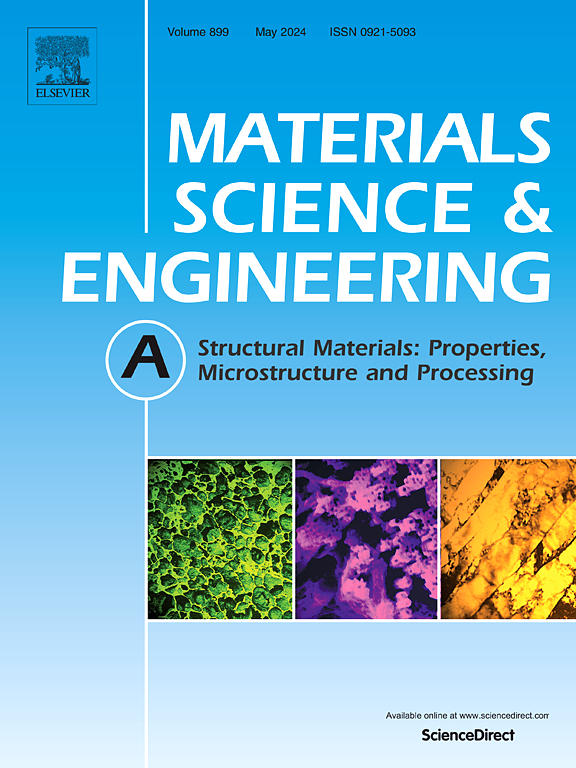Cd微合金化与TiC纳米粒子协同强化的线弧增材制造高强度Al-Cu合金
IF 6.1
2区 材料科学
Q1 MATERIALS SCIENCE, MULTIDISCIPLINARY
引用次数: 0
摘要
高性能大型复杂结构的高效制造需求不断增长,推动了对电弧增材制造(WAAM)的兴趣增加。铝铜合金以其优异的比强度而闻名,广泛用于轻量化应用。然而,WAAM制备Al-Cu合金组织往往会导致组织不均匀和气孔缺陷,从而影响合金的力学性能。本研究采用双线WAAM法将纳米级TiC颗粒和Cd微合金化到Al-Cu合金中。系统研究了TiC颗粒和Cd微合金化对WAAM Al-Cu合金组织演变和力学性能的影响。结果表明,多相协同强化Al-Cu合金具有细小的等轴晶和明显的气孔缺陷抑制作用。优化后的热处理促进了高密度纳米级θ′-Al2Cu析出相的形成。与AlCu合金相比,TiC/AlCuCd合金在垂直和水平方向上的YS、UTS、EL分别提高了22.26%、25.61%、90.57%和24.32%、21.61%、85.16%。实现了强度和塑性的协同增强。本文章由计算机程序翻译,如有差异,请以英文原文为准。
Wire-arc additive manufacturing of high-strength Al-Cu alloy via synergistic strengthening of Cd microalloying and TiC nanoparticle
The growing demand for efficiency manufacturing of large-scale complex structures with high performance has driven increased interest in wire arc additive manufacturing (WAAM). Al-Cu alloys, known for their excellent specific strength, are widely used in lightweight applications. However, the fabrication of Al-Cu alloy structures via WAAM often results in heterogeneous microstructures and porosity defects, which impairs mechanical properties. In this study, nanoscale TiC particles and Cd microalloying are introduced into Al-Cu alloy using the dual-wires WAAM method. The effects of TiC particles and Cd microalloying on microstructural evolution and mechanical properties of WAAM Al-Cu alloy are systematically investigated. The obtained results demonstrate that multiphase synergistically strengthened Al-Cu alloy exhibits a microstructure with fine equiaxed grains and significant suppression of porosity defects. The optimized heat treatment promotes the formation of high-density nanoscale θ′-Al2Cu precipitates. The TiC/AlCuCd alloy in the vertical and horizontal directions showed an increase in YS, UTS, EL by 22.26 %, 25.61 %, 90.57 % and 24.32 %, 21.61 %, 85.16 %, respectively, compared to the AlCu alloy. The synergistic enhancement of strength and plasticity is achieved.
求助全文
通过发布文献求助,成功后即可免费获取论文全文。
去求助
来源期刊

Materials Science and Engineering: A
工程技术-材料科学:综合
CiteScore
11.50
自引率
15.60%
发文量
1811
审稿时长
31 days
期刊介绍:
Materials Science and Engineering A provides an international medium for the publication of theoretical and experimental studies related to the load-bearing capacity of materials as influenced by their basic properties, processing history, microstructure and operating environment. Appropriate submissions to Materials Science and Engineering A should include scientific and/or engineering factors which affect the microstructure - strength relationships of materials and report the changes to mechanical behavior.
 求助内容:
求助内容: 应助结果提醒方式:
应助结果提醒方式:


